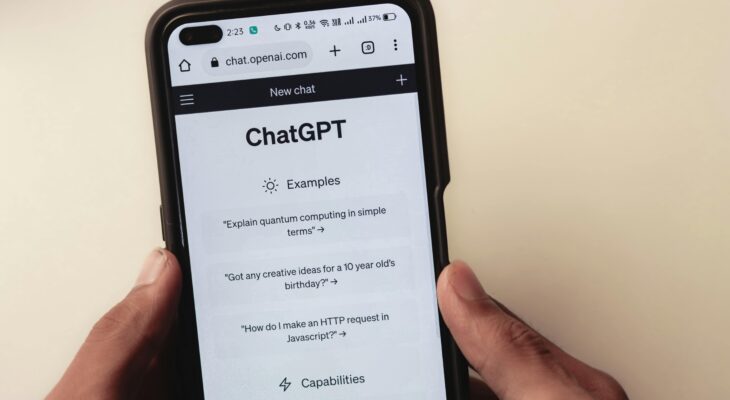Single Blog

How to Find the Best Prompts for ChatGPT to Get the Most Optimal Results?
- officialvandana27@gmail.com
- July 17, 2025
- 0
Harnessing the power of ChatGPT effectively starts with crafting the right prompts. Whether you’re drafting blog posts, writing business descriptions, creating classified ads, or engaging in social bookmarking, well-designed prompts can make all the difference. In this guide, we’ll explore how to discover and refine the best prompts for ChatGPT, ensuring you get clear, accurate, and actionable responses every time.
1. Understand Your Objective
Before writing any prompt, clarify your goal. Ask yourself:
- Am I writing long-form content (e.g., blog posts)?
- Do I need concise marketing copy (e.g., business descriptions)?
- Is this a classified ad that must convey key details in minimal words?
- Or am I preparing content for social bookmarking to boost visibility?
Defining your end result helps you frame the task clearly. For instance, a prompt for a blog outline differs significantly from one for a classified ad.
2. Use Clear, Specific Language
Vague prompts yield vague answers. To optimize accuracy:
- Specify the desired format (“Write a 5-point outline…”)
- Define tone and style (“Use a friendly, conversational tone…”)
- Include length constraints (“Provide 150–200 words…”)
Example:
“Generate a 200‑word introduction for a blog post titled ‘Top 10 SEO Tips for Small Businesses’, using a professional yet approachable tone.”
3. Leverage LSI Keywords in Prompts
Incorporating LSI keywords helps ChatGPT align with SEO goals. Keywords like best prompts for blogs, best prompts for business description, best prompts for classified, and best prompts for social bookmarking guide the model to weave relevant terms into its output.
Prompt Example:
“Create a blog section of 250 words about ‘best prompts for blogs’ that includes tips on structuring subheadings and incorporating keywords naturally.”
4. Best Prompts for ChatGPT Blog Content
When generating blog content, break the task into smaller prompts:
- Outline Prompt
“Provide a detailed outline with six subheadings for a 1,000‑word blog on ‘How AI is Transforming E‑commerce’.” - Section Draft Prompt
“Write 200 words under the subheading ‘Personalized Recommendations’ explaining how AI recommends products to customers.” - Title Ideas Prompt
“Suggest 10 catchy blog post titles about the impact of AI on customer service, incorporating the keyword ‘AI customer support’.”
This modular approach ensures depth and consistency.
5. Best Prompts for ChatGPT Business Descriptions
Crafting an engaging business description requires conciseness and clarity. Use a prompt that sets the stage:
“Write a compelling 100‑word business description for ValimaTech Innovations, a Chandigarh‑based digital marketing agency specializing in SEO, PPC, and social media management. Include the phrase ‘leading digital marketing experts in Chandigarh’.”
This tells ChatGPT exactly what to highlight and which LSI terms to include.
6. Best Prompts for ChatGPT Classified Ads
Classified ads demand precision. You have limited space, so prompts should reflect brevity:
“Compose a 50‑word classified ad for selling a used iPhone 12 in Chandigarh. Highlight ‘excellent condition’, ‘one-year warranty’, and ‘contact via WhatsApp’.”
The model will focus on essential selling points and call‑to‑action phrases.
7. Best Prompts for ChatGPT Social Bookmarking
Social bookmarking descriptions need to grab attention quickly and include keywords:
“Create a 120‑character blurb for a social bookmarking post about ‘5 Unique Lead Generation Strategies Using ChatGPT’, using a friendly and informative style. Include the hashtag #LeadGen.”
This prompt ensures the description is concise, keyword-rich, and formatted for platforms like Reddit or StumbleUpon.
8. Iterate and Refine
Even the best prompts for ChatGPT benefit from iteration. After generating text:
- Review the output for relevance, tone, and SEO best practices.
- Adjust prompt details (“Make it more formal,” “Add a statistic about AI adoption”).
- Re‑run the prompt and compare versions.
This cycle of testing and tweaking hones the prompt to perfection.
9. Utilize Prompt Templates
Save time by creating reusable templates. For example:
[Task]: Write a [length] [format] about [topic], focusing on [key points]. Use a [tone] style and include these keywords: [keyword list].
Filling in the brackets tailors the template to various use cases—blogs, business descriptions, classifieds, or social posts.
10. Tips for Optimal Results
- Provide Context: If your topic is niche, add a brief background.
- Ask for Examples: “Include two real‑world examples.”
- Request Multiple Options: “Give me three variations with different tones.”
- Set Constraints: “Avoid technical jargon,” or “Use bullet points.”
These strategies guide ChatGPT toward the clarity and depth you need.
Conclusion
Finding the best prompts for ChatGPT involves clear objectives, specific instructions, strategic use of LSI keywords, and iterative refinement. Whether you’re drafting long‑form blog posts, concise business descriptions, punchy classifieds, or engaging social bookmarking blurbs, following these guidelines will help you unlock the full potential of AI‑powered content creation.
Ready to elevate your digital strategy? Reach out to ValimaTech Innovations, your partner in data‑driven marketing solutions.
